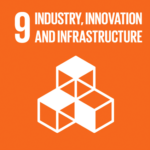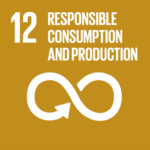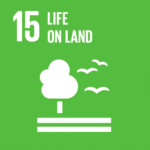Meet the Scientists of the Future Bioeconomy part 6: Bio-based coating for wood
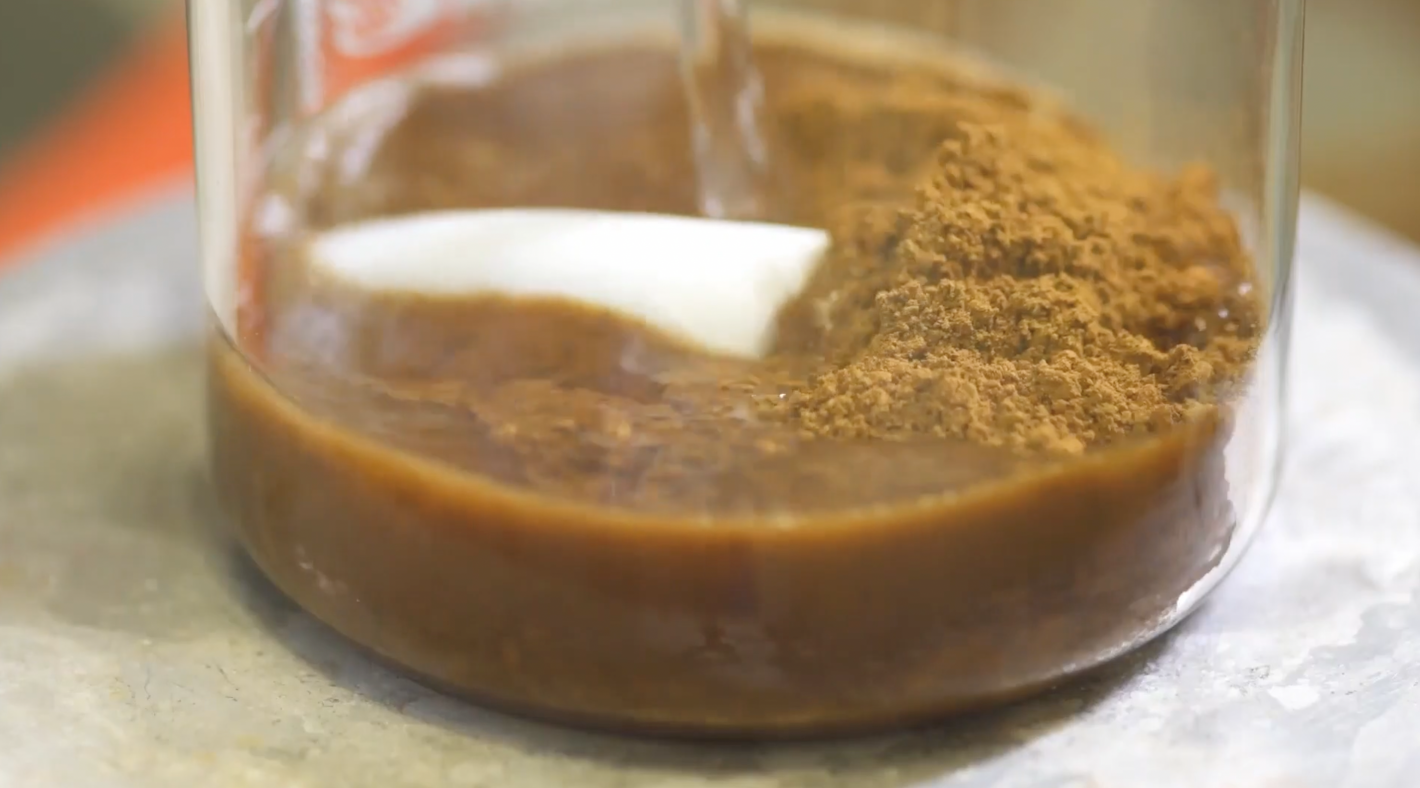
Blog - Published 1.9.2021
Researchers turn a non-toxic residue into wood coating that resists abrasion, stain, and sunlight.
Due to the global efforts to meet sustainability standards, many countries are currently looking to replace concrete with wood in buildings. France, for example, will require that all new public buildings will be made from at least 50 percent wood or other sustainable materials starting in 2022.
Because wood is prone to degradation when exposed to sunlight and moisture, protective coatings can help bring wood into wider use. Researchers at Aalto University have used lignin, a natural polymer abundant in wood and other plant sources, to create a safe, low-cost and high-performing coating for use in construction. “Our new coating has great potential to protect wood. It’s more water repellent than a lot of commercial coatings because it retains the natural structure of wood and its micro-scaled roughness. Since it’s hydrophobic, the coating is also quite resistant to stains, while lignin’s inherent structure resists colour changes from sunlight. It also does an excellent job of retaining wood’s breathability,” explains Alexander Henn, doctoral candidate at Aalto University, The School of Chemical Engineering.
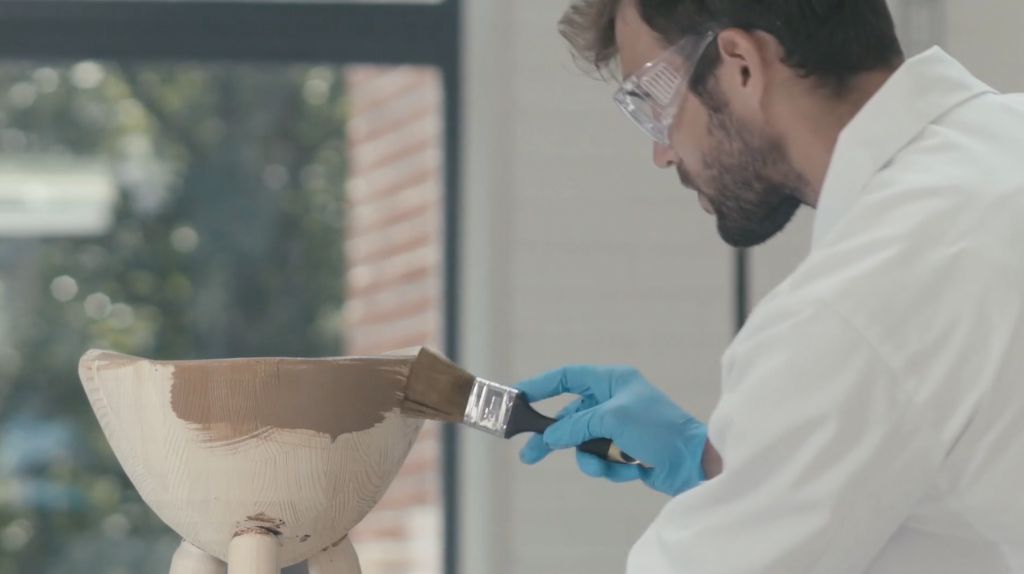
From waste to value
Lignin is often regarded as a waste product of pulping and biorefinery processes. Each year, about 60-120 million tonnes of lignin is isolated worldwide, of which 98 percent is incinerated for energy recovery. Lignin has several beneficial properties; however, the poor solubility of most lignin types and the mediocre performance of lignin-based products have so far limited its commercial applications. ‘Lignin as a coating material is actually very promising with its many benefits compared to the synthetic and bio-based coatings currently used. It has excellent anti-corrosion, anti-bacterial, anti-icing, and UV-shielding properties. Our future research will concentrate on developing characteristics like elasticity of the coating’, says Monika Österberg, Head of the Department of Bioproducts and Biosystems at Aalto University.
The Amazing Nanosized Lignin Spheres from FinnCERES on Vimeo.
Environment, health and safety
Currently, widely used mechanically protective coatings for materials such as wood, concrete, metals, and composites are petroleum-based, which include substances that are harmful for the environment. Vegetable-oil coatings — like those made from tall, linseed, coconut, soybean, and castor — can be more sustainable alternatives but they often lack durability. As a result, these oils are often combined with synthetic materials to improve their performance.
More sustainable and non-toxic alternatives can help the coating industry meet new safety regulations. For example, the amount of volatile organic compounds (VOCs) has been regulated not only due to their impact on health but also on the ozone layer. Similarly, the European Union (EU) has placed restrictions on some chemicals used by the coating industry, such as bisphenol A and formaldehyde (used in epoxy and polyurethane coatings), and recently classified titanium dioxide — one of the most widely used pigments in paints — as a class II carcinogen.
UN Sustainable Development Goals
A wood coating made from lignin is a concrete step towards a more sustainable bioeconomy, as it can replace fossil-based chemicals that are toxic to the environment. It therefore supports the UN’s Sustainable Development Goal 9: to promote sustainable industry and innovation and Goal 12: to promote responsible consumption. Practical solutions for the circular economy and the bioeconomy are also tools in the fight against climate change (objective 13). Reducing the chemical burden on the environment through bio-based alternatives will also help to protect human health (Objective 3) and protect sensitive ecosystems and biodiversity, both at sea and on land, as set out in objectives 14 and 15.
This Finnish innovation and many others can be seen in the Aalto University’s Designs for a Cooler Planet exhibition from 8 September to 29 September 2021. The exhibition is part of the Helsinki Design Week 2021 program.
Further information
An article Colloidal Lignin Particles and Epoxies for Bio-Based, Durable, and Multiresistant Nanostructured Coatings published in ACS Applied Materials & Interfaces on 15 July 2021.
Agenda2030
A wood coating made from lignin is a concrete step towards a more sustainable bioeconomy, as it can replace fossil-based chemicals that are toxic to the environment. It therefore supports the UN’s Sustainable Development Goal 9: to promote sustainable industry and innovation and Goal 12: to promote responsible consumption. Practical solutions for the circular economy and the bioeconomy are also tools in the fight against climate change (objective 13). Reducing the chemical burden on the environment through bio-based alternatives will also help to protect human health (Objective 3) and protect sensitive ecosystems and biodiversity, both at sea and on land, as set out in objectives 14 and 15.
Meet the Scientists of the Future Bioeconomy
The future of our bioeconomy is in the making. In this series we present the scientists and science behind the groundbreaking discoveries that will have a great impact on a sustainable circular bio economy. How will synthetic biology, advanced biomaterials research and new applications using lignocellulosic fractions contribute to a more sustainable future? In this series you will be invited behind the scenes to meet some of our most brilliant young scientists working on solving some of the most pressing challenges of our time.


